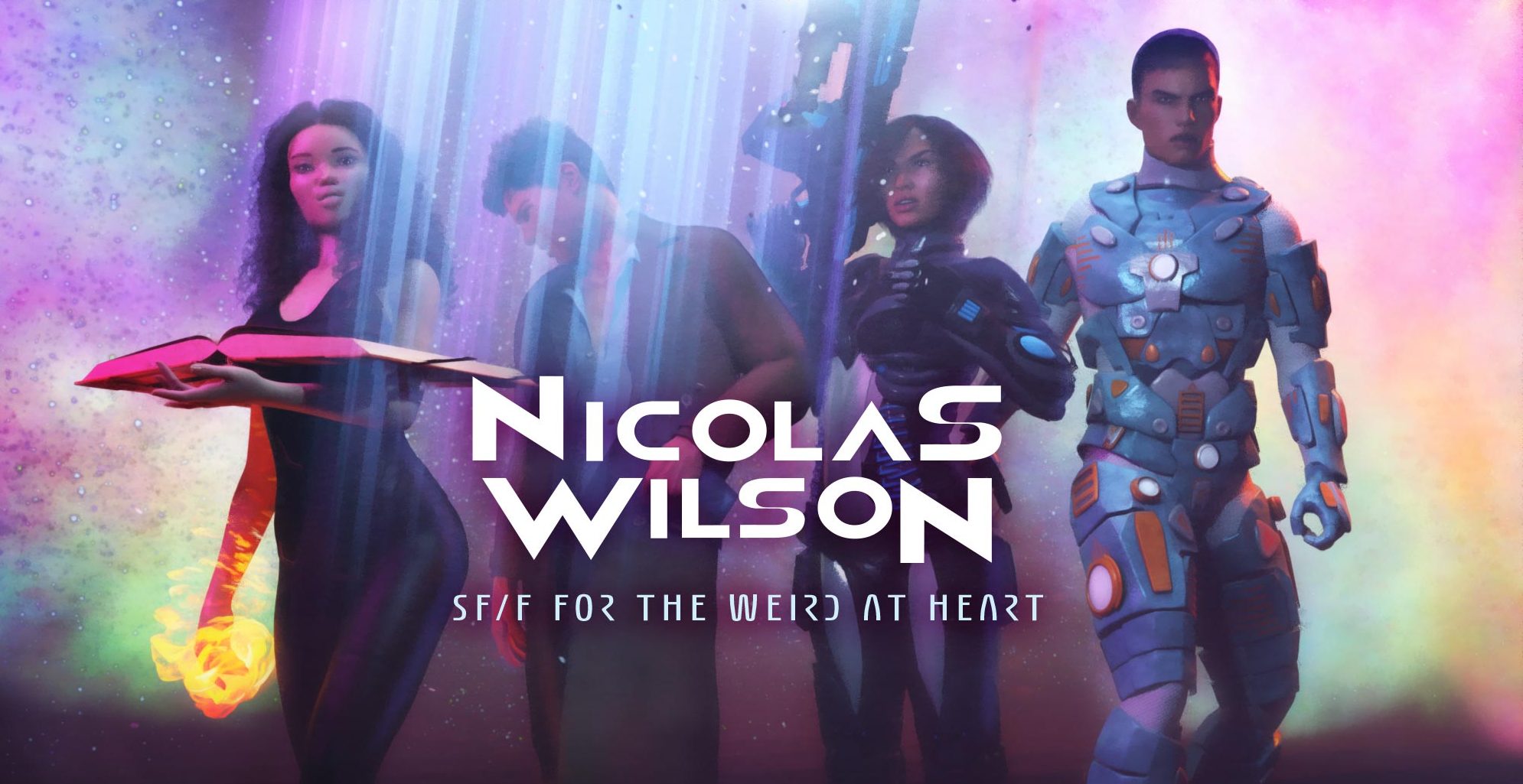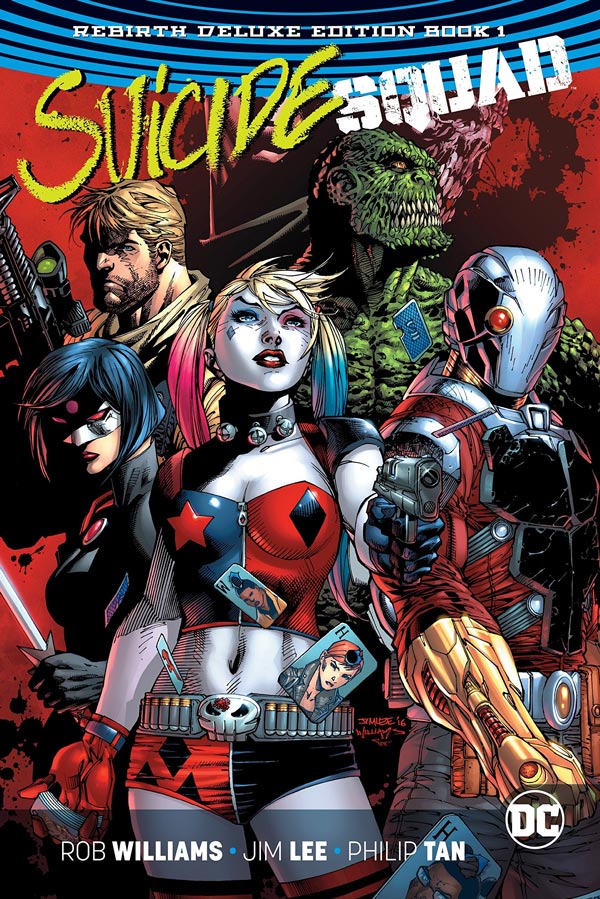“If Polka-Dot Man can have meaning, any of us can.” -James Gunn, to Fandom.com
James Gunn, the man whose career is single-handedly proving there are no bad ideas, only crummy executions, was given the Suicide Squad to retool at a low ebb, having temporarily lost the reigns of the Guardians of the Galaxy (it was a whole crappy saga of right-wing crybaby pants-wetting)- or maybe his talent is limited to alliterative comics thing. But his ‘secret’ really seems to be giving a crap about his characters in a way a lot of us don’t feel cared about, and in making his misfits loveable, he makes all of us misfits in the audience feel like we can be loved, too. But this isn’t a review of a movie I haven’t seen and isn’t even out here, yet.
This is a review of similar/related, “You liked X, what to try next” stripe. Everyone knew the idea behind Suicide Squad was cool, a supervillain deniable ops unit run by the shadiest of government operatives, oh, and always with a body count of colorful has-beens. Note, the 2021 Gunn film really shouldn’t be mistaken for David Ayers’ much less polished, We Really Wish This Hadn’t Been Suicide Squad from 2016 (in the year of our simulation crapping the bed 000001).
There are certainly newer Suicide Squad things to cover, but both being budget conscious and being a book I snapped up a while back on sale, I’ve been looking for an excuse to read the Rob Williams/Jim Lee book, which is on Comixology Unlimited as well as DC Universe (no word yet on when it might be coming to Marvel Comics Unlimited- and yes, I will likely continue to make variations on this joke until forced to stop, so write my congressperson).
Okay, it’s genuinely bizarre that this book starts (after a prologue) with Obama shutting down Waller’s black ops supervillain ring (obviously it doesn’t take, or we wouldn’t have a book). But it’s hard not to imagine what would have happened under the other guy… imagine Orange Thanos with a More Pornographic Chin with his own villain hit squad; he’d basically become doughy and less honest about his comb-over Lex Luthor (and way, way dumber). There’s a plot bunny* there, is what I’m saying, one on super-steroids with cybernetic components (this plot bunny might have a further, nested plot bunny- Russian nested plot bunnies- which might in itself constitute another plot bunny).
Sadly, the interlude doesn’t last; I could genuinely have gone for a slightly angrier Obama getting pissy that his supervillain smart bombs were just as messy as drone strikes, maybe even build in an arc about how people were starting to protest, after their origins got leaked, and you could have done a version of the drone debate, but for the ethics of using supervillains as an elite strike force with a justifiable body count (both civilian and their own). I’m… really not sure if it’s a sign of quality that a work like this creates plot bunnies just as quickly as actual rabbits procreate, or if it’s a sign that it’s not fulfilling its promise that there seem to be so many of the little bastards.
But to the squad. This story introduces Hack, a Harley fangirl, which seems… dumb, at least within the world of DC Comics, because the horrific crimes of the Joker make her a party to mass-murder and potentially genocide, plus the abuse inherent in their relationship is on pretty stark display, and lionizing the Quinnpin of Crime because she’s ‘free,’ while showing she’s also free of the constraints of sanity… it just doesn’t serve to do anything other than make Hack seem either stupid or thinly written. She’s also massively overpowered; she’s a technopath, meaning she can talk to/control tech, can download the contents of secure computers into her memory, oh, and teleport groups of people across massive distances over the internet, but in doing so effectively scans them, allowing her the ability to basically xerox people and (potential spoiler) recreate them if they die. It’s… not great.
The team in the 2016 book seems like a less colorful version than even the ones we got in the Ayer movie- like the roster is similar, but they’re all doing variations on quipping action hero stereotypes whose butt-cheeks remain permanently clenched so tightly they can’t actually be witty or interesting, and Harley Quinn, who’s doing a nonsequitir but also not terribly interesting Coocoo’s Nest.
I think even then, I might have liked the book if it was sticking the landing on serious realism (within the four-color comic reality), but it misses both the possibility of interpersonal drama and the pathos of the intrapersonal. Like, Enchantress and Killer Croc have a burgeoning relationship, largely because they both are treated like monsters but on the inside just want to be normal, decent people. They don’t deal with this in any real way, where June is kind of horrified that what is technically not bestiality but is really really close to it for comfort is part of that equation; it’s basically missing the interesting subtext of the beauty and the beast story it’s doing. And you might have even been able to justify it, if their eventual hook-up was played for a joke, even, the equivalent of a drunk one-night stand and waking up to someone you would not have chosen sober. But instead it just kind of… happens. It lands with a thud, no dramatic payoff, no pathos, no character having an interesting character moment, no romance, it just… exists. Story as shit happening, people quipping, but no one really caring (also known as the overly superficial read of the MCU’s house style).
Another example happens during the same story. Belle Reve prison (also the Squad’s HQ) has, through contrivance, had all of the people within essentially reverse polarities. That means most nice characters turn nasty, most sane ones turn homicidal, and Harley Quinn puts down her Coocoo Puffs. As essentially the only member of the Squad still capable, saving the day falls on her thin shoulders. This should have been a really interesting story for her, think Flowers for Algernon, but if, at the climax, the rat had to sacrifice his intelligence to save a bunch of people; it could have been both tragic and heroic, and cemented her as a character to be reckoned with (and Williams, too). And instead it’s mostly an excuse for Harley to put her hair up, wear a white coat and glasses, and use a little more strategy than her usually chaotic plans allow for. There’s if memory serves a line that tangentially mentions that another character is aware that she’ll be sacrificing something, but Harley isn’t even really conflicted, let alone devastated at what she’s about to lose.
I’ll spin this out into a separate blog, since it’s getting wordy, but the comic isn’t living up to its full dramatic potential. But it’s got good bones. Recognizing the story potential, and getting it most of the way there, isn’t the default. I wouldn’t be surprised if Rob Williams grows into one of the better comic story-tellers around. And of course, Jim Lee’s art, as always, is beautiful. High-tech, expressive, detailed and always very consistent.
I’d say at a minimum flip through it. If you’re looking for a place to start on Suicide Squad… I don’t know that I could suggest it be here. Maybe it’s just that, four years later, it feels very much like what it was, a companion to Ayer’s movie version: not as fun as it should be, not as smart as it could be, but also nowhere near as dark as is should be, either. Better, unequivocally (I made the mistake of rewatching the extended cut of the movie to prep for the sequel, and it’s… worse than I remembered, even though I remembered not liking it). For now, go see Birds of Prey, instead. I liked it enough I pitched a sequel, which no one will make, but hopefully you’ll get a kick out of. You’re welcome.

